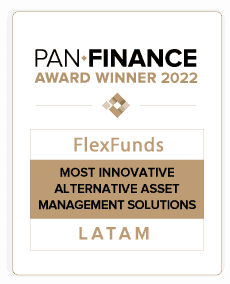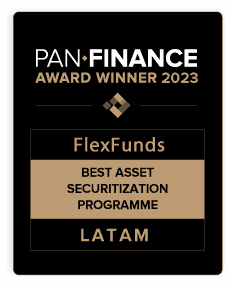- In this article, you will find information about alternative assets and their main advantages and disadvantages.
- This information is useful for asset managers who intend to allocate part of their capital to investing through these types of assets.
- FlexFunds solutions are designed to distribute investment strategies composed of alternative assets in a simple, efficient, and scalable manner. These solutions allow asset managers to transform illiquid assets into listed securities that offer greater liquidity and more accessible trading.
Investment is a vast and diverse field that offers numerous opportunities for managers and investors, ranging from traditional assets such as stocks and bonds to so-called “alternative assets.” These investments go beyond the typical range of publicly traded securities and bonds and can include real estate, hedge fund participations, commodities, artworks, and much more.
In this regard, it is worth exploring all the advantages and challenges that alternative assets present, their future potential, and how they can affect an investment portfolio.
Great growth ahead
It is important to start with the fact that alternative assets are experiencing significant growth and acceptance within the markets. Estimates for the future are quite promising. According to PwC, “alternative asset classes –particularly real assets, venture capital/investment, and private debt– will more than double in size, reaching $21.1 trillion by 2025, representing 15% of global AUM.” A truly optimistic forecast.
Most investment strategies are designed for large institutional investors and those with more advanced financial knowledge. This leaves the vast majority of investors without broad exposure or opportunities to participate, although more possibilities are emerging within the range of products.
In some cases, one can acquire a fund that has part of its portfolio invested in alternative assets. These positions entail the possibility of obtaining high capital gains compared to typical retail opportunities, though with higher risk, making education fundamental.
Advantages of alternative assets
Once the potential path of these assets is understood, it’s interesting to approach the advantages they offer when building a portfolio.
1. Diversification
One of the main advantages of alternative assets is their ability to diversify an investment portfolio. Diversification involves distributing assets across different classes, sectors, and regions with the aim of reducing risk.
Alternative assets tend to have lower price correlations with traditional markets, such as stocks and bonds. This means they should behave differently under market conditions, which can help smooth out fluctuations in the value of your portfolio.
2. Potential returns
This option also offers the possibility of generating attractive returns. Since they are not directly tied to stock market movements, they can provide investment opportunities with independent return potential. Some, like real estate and commodities, can also provide regular income streams in the form of rents and dividends.
3. Resilience to changing economic conditions
This possibility often has greater resilience to changing economic conditions. For example, real estate assets are usually less volatile than stocks and can maintain their value during economic recessions. Similarly, investments in art and collectibles can maintain their value in times of economic uncertainty.
4. Volatility and risk reduction
Since these assets do not necessarily follow the same patterns as stock markets, they can act as a buffer against market downturns. This can be particularly valuable for managers who want to reduce volatility and achieve a more balanced portfolio.
Challenges of alternative assets
But every investment, effectively, carries risk. It’s interesting to know what the main challenges are for investors regarding alternative assets.
1. Limited liquidity
Unlike stocks and bonds, which can be easily bought or sold in public markets, many alternative assets require a more complex and often slower sales process. For example, selling real estate or artwork can take time and does not guarantee a quick conversion into cash.
2. Risk assessment
Since these assets often lack the transparency and regulation found in traditional financial markets, investors may struggle to adequately assess the risks associated with these investments. The lack of clear information and the complexity of some alternative assets can increase uncertainty.
3. Access to transparent information
In public markets, investors can easily access updated financial data and reports. However, in the case of alternative assets, information is often private and may be subject to confidentiality agreements. This can make research and investment analysis more difficult.
4. Investment costs
Some alternative assets may have higher fees compared to traditional investments. Expenses associated with managing hedge funds, real estate, or other alternative investments can reduce overall portfolio returns.
Alternative assets offer a range of advantages that can enrich an investment portfolio, including diversification, resilience to changing economic conditions, and potential profitability.
A manager’s decision to include them in a portfolio should be based on the investor’s goals and risk tolerance. It’s important to fully understand the pros and cons of these assets before making an investment decision. Proper diversification and careful planning can help harness the benefits while minimizing potential risks. If you have any questions, you can contact one of our financial experts to make your inquiry.








